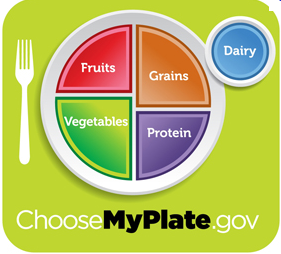It's hard to condense 300 pages into one, but since I believe in the value of small steps, here are seven small but mighty "Tips to Make You Tops" from my book, 50 Diabetes Myths That Can Ruin Your Life and the 50 Diabetes Truths That Can Save It.
You'll find more than 100 tips in my book covering all aspects of diabetes care, but each of these below will help you do a little better managing your diabetes.
Think of these as a Valentine's Day gift you can give yourself today -- and throughout the year.
Tips to Make You Tops
1. Know Your Numbers Before and After Meals -- If you have diabetes, the American Diabetes Association recommends your blood sugar be between 70 and 130 mg/dl (3.9 and 7.2 mmol/l) before meals, less than 180 mg/dl (10 mmol/l) two hours after starting a meal, and that you have an A1C (a blood value that reflects your average blood sugar for the past two to three months) under 7 percent -- or as close to normal as possible (between 4 and 6 percent) without incurring hypoglycemia (low blood sugar).
The Association of Clinical Endocrinologists recommends tighter control: that your blood sugar is under 110 mg/dl (6.1 mmol/l) before starting a meal, lower than 140 mg/dl (7.8 mmol/l) two hours after beginning a meal, and that your A1C is 6.5 percent or less.
Dr. Richard Bernstein, who advocates maintaining near normal blood sugars if at all possible, recommends a blood sugar of 83 mg/dl (4.6 mmol/l) for patients without severe gastroparesis before, during and after meals.
If you don't know your target range for your blood sugar, or your blood sugar numbers are often outside your range, discuss this with your health care provider. Managing blood sugar is key to help prevent and/or delay diabetes complications.
2. Symptoms Of, And Ages For, Type 1 Diabetes -- While people think of type 1 diabetes as a disease that only affects children, you can get it at any age. Typical symptoms include: high blood sugar, excessive urination, hunger, thirst, weight loss and fatigue. Just know many adults with type 1 are misdiagnosed with type 2 because they're past puberty (I was). However, people with type 1 are not typically overweight or insulin resistant -- the hallmark characteristics of type 2 diabetes.
3. Protect Your Feet -- People with diabetes are at increased risk of foot ailments due to nerve-related diabetes complications. Keeping the muscles in your feet and legs strong can help ward off foot problems. One of the easiest and most effective ways to do this is regular, simple walking -- 30 minutes five days a week.
4. Treating a Stress High -- For most people stress raises blood sugar. To treat high blood sugar caused by stress, if you use insulin take half the amount you would normally to bring down your blood sugar. If you use oral medications, don't do anything. Orals do not act quickly enough to compensate for the short-term effects of stress.
5. Making a Healthy Meal -- The "Plate Method," recently adopted by the USDA, makes putting together a healthy meal -- a moderate amount of carbohydrates, little fat and cholesterol, a good amount of fiber -- easy. Fill half your plate with any variety of colorful veggies low in carbohydrates, such as asparagus, broccoli, Brussels sprouts, eggplant, carrots, or cauliflower. This can include fruits also low in carbohydrate like berries and melon. Fill one-quarter of your plate with carbohydrate-dense foods such as potatoes, rice, beans, corn, or legumes, and fill the remaining quarter with lean protein such as chicken, fish, lamb, pork, or beef.
6. Fruit Choices -- Different fruits contain different amounts of carbohydrate and some raise blood sugar more than others. Berries and melons, because they contain a lot of water, raise blood sugar less than more starchy fruits like bananas and mangoes. Dried fruits such as figs, apricots, and raisins contain approximately the same amount of carbohydrate as they do in their fresh state, but because of their smaller size, you may be tempted to eat more of them and consume more carbohydrates and calories.
7. Attitude Adjustment -- See your blood sugar numbers as information not a judgment of your self-worth. Monitoring your blood sugar is the best tool to help you evaluate the effectiveness of your diabetes treatment plan. If your numbers are often out of your target range, discuss your treatment plan with your health care provider. You may need to adjust your meal plan, activity level, and/or your medication to meet your blood glucose goals. Know also that no matter how hard you work at managing your blood sugar sometimes your glucose levels, for some inexplicable reason, just won't be in your target range.
Riva speaks to patients and health care providers about flourishing with diabetes and is the author of "50 Diabetes Myths That Can Ruin Your Life and the 50 Diabetes Truths That Can Save It" and "The ABC's Of Loving Yourself With Diabetes." Visit her website DiabetesStories.com.
For more by Riva Greenberg, click here.
For more on diabetes, click here.
